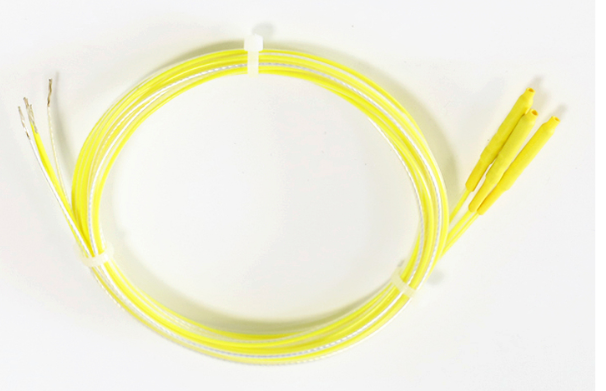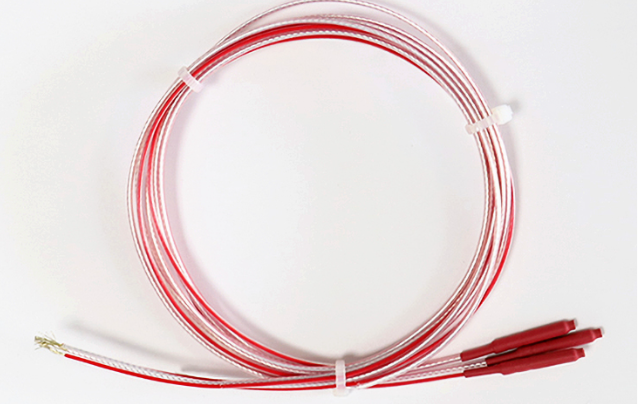Haroratni o'lchashda aniqlikning ahamiyati
Bugungi kunda avtomatik ishlab chiqaruvchi fabrikalar yoki kasalxonadagi mashinalar kabi turli zamonaviy tizimlarda temperaturani nazorat qilish juda muhim rol o'ynaydi. Aslida, agar har bir o'lchovda barqaror natijalar berilmasa, temperaturani his qiluvchi sensor qimmatli bo'lmaydi. Sensorlar noto'g'ri sonlarni ko'rsatishni boshlasa, yomon narsalar sodir bo'ladi. Mahsulot sifati pasayadi, energiya sarfi oshadi, chunki tizimlar keragidan ortiq ishlaydi va eng yomon variantda haqiqiy xavfsizlik muammolari yuzaga kelishi mumkin. Shu sababli, aniqlikni o'lchashni o'z vaqtida amalga oshirish, o'zlarining jihozlarini to'g'ri ishlashini ta'minlash uchun javobgar shaxslar uchun eng muhim vazifadir.
Noto'g'ri harorat o'lchovlarining ta'siri
Kichik chetlanishlar ham sensor ko'rsatkichlarida keng qo'llaniladigan oqibatlarga olib kelishi mumkin. Ishlab chiqarishda bir nechta gradusdagi xatolar temperaturaga juda sezgir bo'lgan materiallarning partiyalarini bekor qilishi mumkin. Tibbiy sohada bemorning noto'g'ri temperaturasi ma'lumotlari noto'g'ri tashxisga olib kelishi mumkin. Aniqlik va barqarorlik ixtiyoriy emas — ular asosiy talablardir.
Harorat sensori aniqligiga ta'sir qiluvchi asosiy omillar
Sensor turi va dizayni
Haroratni o'lchash sensorlari turli xil shakllarda mavjud bo'lib, ularning har biri o'ziga xos aniqlik xususiyatiga ega. RTD yoki qarshilik harorat detektorlari, ayniqsa platina bilan ishlanganlari, juda yuqori aniqlik va uzoq muddatli barqarorlik bilan ajralib turadi. Termistorlar ma'lum harorat oralig'ida yetarli darajada yaxshi ishlaydi, lekin bu chegaradan chiqib ketganda ishonchliligi kamayadi. Shuningdek, termoparlar ham mavjud. Bu kichik guruh aksariyat muhitlarda chidamli va moslashuvchan bo'lib, boshqa variantlarning aniqligini ko'p hollarda yetib bora olmaydi, shu sababli o'zlarining o'qish natijalarini to'g'rilash uchun kompensatsiya tizimiga ega bo'lishlari kerak bo'ladi.
Kalibrlash sifati
Zavod kalibrlash harorat sensorining dastlabki aniqlik me'yoriga javob berishini ta'minlaydi. Biroq vaqt o'tishi bilan issiqlik sikllari, yoshlanish va qattiq muhitga ta'sir qilish tufayli sensorlarning meyorida o'zgarishlar kuzatiladi. Ayniqsa muhim sohalarda aniqlikni saqlash uchun muntazam qayta kalibrlash zarur.
O'rnatish usuli
Noto'g'ri o'rnatilgan sensorlar katta xatoliklarga olib kelishi mumkin. Sensorlar maqsadli haroratni aniq aks ettirishi, issiqlik o'tkazgichlar, havo oqimlari yoki issiqlik kechiktiruvchi muhitlardan mustaqil bo'lishi kerak. Sirtga o'rnatilgan sensorlar bilan aloqa maxfiy bo'lishi kerak va zarur hollarda issiqlik o'tkazuvchan mazil yoki izolyatsiya materiallaridan foydalaniladi.
Signallarni sozlash va to'siq
Analog sensorlarda kuchsiz elektr signallari kuchaytirilishi va o'zgartirilishi kerak. Yomon ekranlanish, elektr shovqinlari yoki barqaror bo'lmagan quvvat manbalari ma'lumotlarni buzishi mumkin. Muhit tomonidan yuzaga keladigan to'siqlar tufayli vujudga kelgan xatoliklarni kamaytirish uchun mos signallarni sozlash elektr sxemalari va ekranlangan kabeldan foydalanish tavsiya etiladi.
Harorat sensorining aniqligini ta'minlash bo'yicha eng yaxshi amaliyotlar
Dasturga mos keluvchi to'g'ri sensor tanlash
Aniqlik o'zgartiruvchini ishlatayotgan muhitga moslashtirishga aniq bog'liq. Barqaror muhitda yuqori aniqlik talab qilinadigan sohalarda platina RTDlarni tanlash eng maqbul variant bo'ladi. Tor diapazonda tez va arzon o'lchashlar uchun termistorlar yetarli bo'lishi mumkin. Sanoat yoki yuqori haroratli muhitlarda o'lchashda termoparlar esa maqbul darajada aniqlik bilan barham beruvchanlik taklif qiladi.
Muntazam qayta kalibrlash
Kalibrovka jadvali dasturning nozikligiga va muhitga asoslanib tuzilishi kerak. Dorivor vositalar yoki kosmik soha kabi ayrim sanoat turlari belgilangan muddatlar oralig'ida hujjatlangan kalibrovkani talab qiladi. Kalibrovka milliy yoki xalqaro standartlar asosida amalga oshirilishi kerak bo'lib, imkon qadar sertifikatlangan kalibrovka asbobi yordamida bajarilishi lozim.
Raqamli sensorlardan foydalanish
Digital harorat sensori ichki signal qayta ishlashni amalga oshiradi, analog signalning oshkorlanishini va shovqinlarni minimal darajada saqlaydi. Ularning chiqishlari tashqi ta'sirlarga nisbatan chidamliroq bo'lib, qurilmalararo barqaror o'qishlarni taqdim etadi. Ular ayniqsa, ichki tizimlar va iste'mol elektronikasida foydalidir.
Issiqlik uzatish xatolarini minimal darajada qilish
Temperaturani kontakt usulda o'lchashda, sensor o'lchanayotgan obyekt bilan optimal issiqlik aloqasida bo'lishi kerak. Zarur hollarda issiqlik o'tkazuvchan materiallardan foydalaning va havo bo'shliqlarida o'lchashdan saqlaning. Shudring uchun mo'ljallangan qo'llanmalar uchun sonda to'liq botirilishi va suyuqlik temperaturasini aniq o'lchash uchun to'g'ri joylashtirilishi kerak.

Sensorlarni o'rnatish va atrof-muhit shartlarini hisobga olish
Isslantiruvchi elementlardan yoki shamoldan saqlaning
Sensorlarni isitish elementlari, chiqish teshiklari yoki havo oqimi tez o'zgaradigan joylarga yaqin joylashtirmang. Bunday elementlar noto'g'ri temperaturaviy gradientlarni keltirib chiqarishi mumkin.
Atrof-muhit shartlarini kuzatish
Ayniqsa, hisobchi sohalarda aniq o'qishlar olish uchun atrof-muhit namligi, elektromagnit maydonlar va tebranish darajasi nazorat qilinishi kerak. Ba'zi hollarda qo'shimcha ekranlash yoki atrof-muhitni himoya qiluvchi qurilmalar kerak bo'lishi mumkin.
Aniqroq natijalar olish uchun murakkab usullar
Etalon sensorlardan foydalanish
Uzoq muddatli aniqlik talab qilinadigan dasturlarda ishlatish uchun referent sensor operational sensorlar bilan birga ishlatilsa, o'zaro tekshirish va haqiqiy vaqtda to'g'irlash imkonini beradi.
Signallarni o'rtacha va filtrlash
Harakatdagi o'rtachalar yoki eksponensial silliq qilish kabi dasturiy filtrlash usullari o'tish cho'qqilari va tasodifiy shovqinlarning ta'sirini kamaytirishga yordam beradi, natijada barqaror o'qishlar hosil bo'ladi.
Kompenatsiya algoritmlari
Termoparalar uchun sovuq tugun kompensatsiyasi muhim ahamiyatga ega. Zamonaviy tizimlarning ko'pchiligi atrof-muhit harorati ta'sirini hisobga olish uchun ichki kompensatsiya elektr zanjirlarini o'z ichiga oladi.
Monitoring va diagnostika
Davriy o'zini tekshirish
Ba'zi murakkab sensorlar vaqt o'tishi bilan ishlashini nazorat qiluvchi o'z-diagnostika xususiyatlarini o'z ichiga oladi. Aniqlik qabul qilish mumkin bo'lgan chegaradan tashqari o'zgarishlar sodir bo'lganda ogohlantirishlar beriladi.
Маълумотларни журналга ёзиш
Harorat tendentsiyalarini yozib borish sensorlarning tez shikastlanishini aniqlashga yordam beradi. Sensor birktoncha og'ish yoki noaniqlik namoyon qilganda, butunlay chiqib ketishidan oldin qayta sozlash yoki almashtirish jadvaliga kiritiladi.
Dastur bo'yicha aniqlik maslahatlari
Sanoat ishlab chiqarish
Isitish, sovitish yoki quritish jarayonlarida bir xil natijaga erishish uchun aniqlik muhimdir. Qizilum qayta ishlanish uchun yuqori darajada baholanagan sensorlarni tanlang va ularni mustahkam mexanik interfeys bilan o'rnating.
HVAC tizimlari
HVAC nazoratidagi hatto bir nechta gradus xatosi energiya samarasizligiga olib kelishi mumkin. Yaxshi kalibrlangan sensorlardan foydalaning, ular yaxshi termal aloqaga ega bo'lib, quyosh nuri yoki ventilyatsiya teshiklaridan uzoqda o'rnatilgan bo'lsin.
Tibbiy uskunalar
Bemor xavfsizligi uchun yuqori aniqlikdagi raqamli sensorlarni tanlang va muhim dasturlarda takrorlanishni qo'llang. Tibbiy standartlarga nisbatan har doim kalibrlashni o'tkazing.
Elektronika va yarimo'tkazgichlar
Aniq harorat nazorati ishlab chiqarish va sinov o'tkazish uchun muhimdir. Yuqori tezlikdagi javobga ega bo'lgan ekranlangan sensorlardan foydalaning va ularni issiqlik manbalari yoki chip to'plamlariga yaqin o'rnating.
Ko'p so'raladigan savollar
Harorat sensorlari qanchalik tez-tez kalibrlanishi kerak?
Bu dastur va muhitga bog'liq. Muhim tizimlar yiliga yoki hatto chorak yilga bir marta kalibrlash talab qilishi mumkin. Kamroq sezgir dasturlar ikki yoki uch yildan keyin qayta kalibrlanishi mumkin.
Harorat sensorining eng aniq turi qaysi?
Platina RTDlar (PT100 kabi) ayniqsa nazorat ostida bo'lgan muhitda vaqt o'tishi bilan eng aniq va barqaror hisoblanadi.
Harorat sensorlari vaqt o'tishi bilan aniqlikni yo'qotishi mumkinmi?
Ha. Sensorni eskirish, issiqlik sikllari va tashqi muhit ta'siri tufayli sozlamasi buzulishi aniqlikni kamaytirishi mumkin. Muntazam qayta sozlash tavsiya etiladi.
Raqamli sensor analognikidan ko'ra aniqroqmi?
Shunday emas. Raqamli sensorlar shovqinga kamroq nozik, lekin ularning aniqligi sensorni sifatiga va ichki sozlashga bog'liq. Analog sensorlar esa mos signallarni shakllantirish va sozlash bilan yuqori aniqlikka ega bo'lishi mumkin.
Mundarija
- Haroratni o'lchashda aniqlikning ahamiyati
- Harorat sensori aniqligiga ta'sir qiluvchi asosiy omillar
- Harorat sensorining aniqligini ta'minlash bo'yicha eng yaxshi amaliyotlar
- Sensorlarni o'rnatish va atrof-muhit shartlarini hisobga olish
- Aniqroq natijalar olish uchun murakkab usullar
- Monitoring va diagnostika
- Dastur bo'yicha aniqlik maslahatlari
- Ko'p so'raladigan savollar

